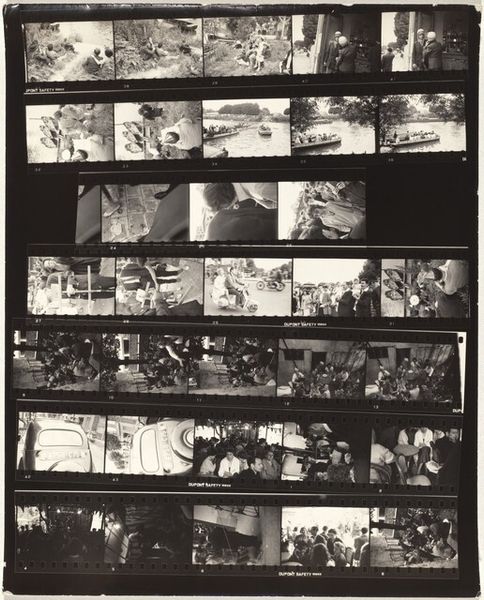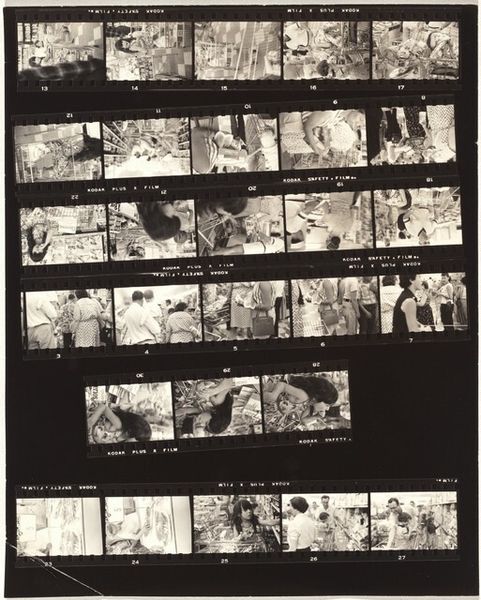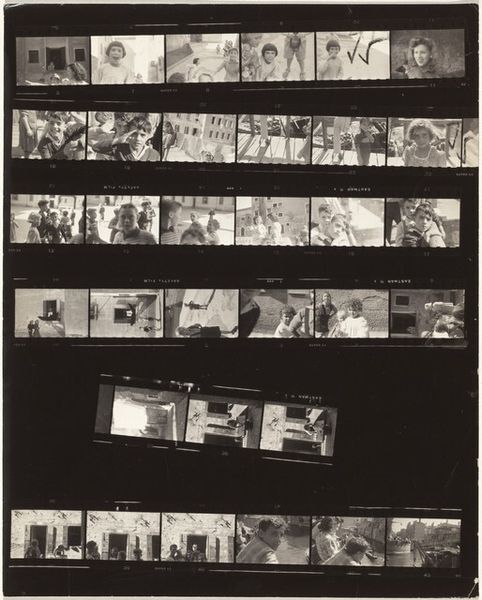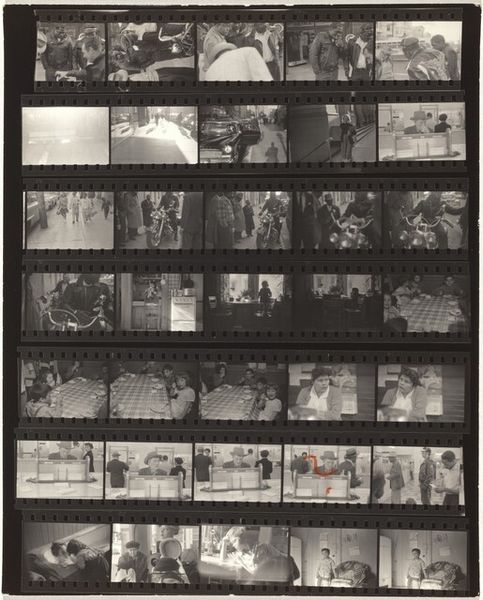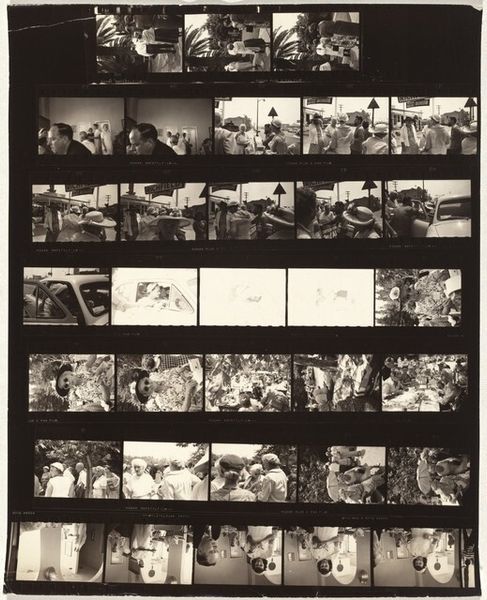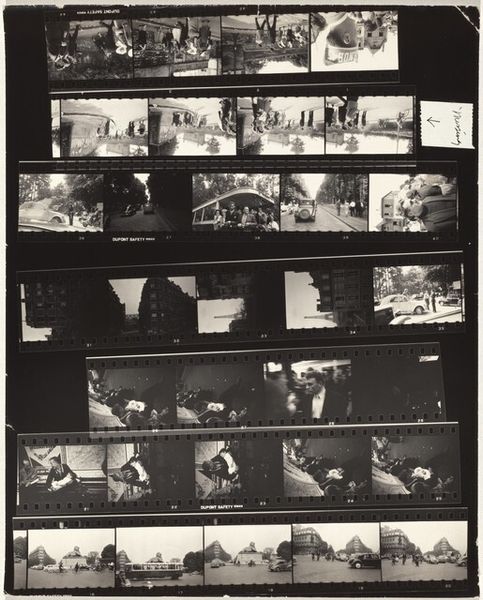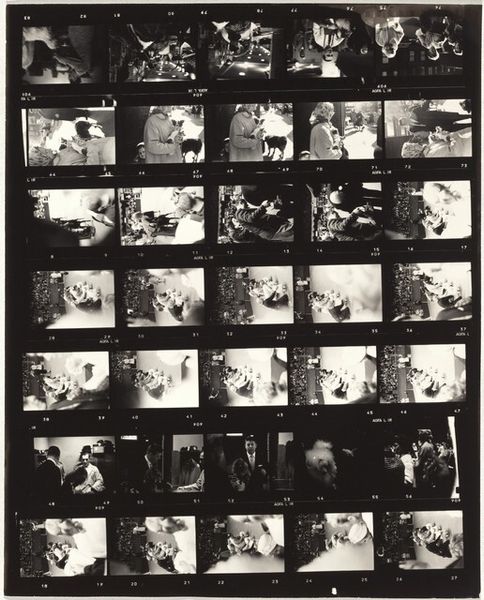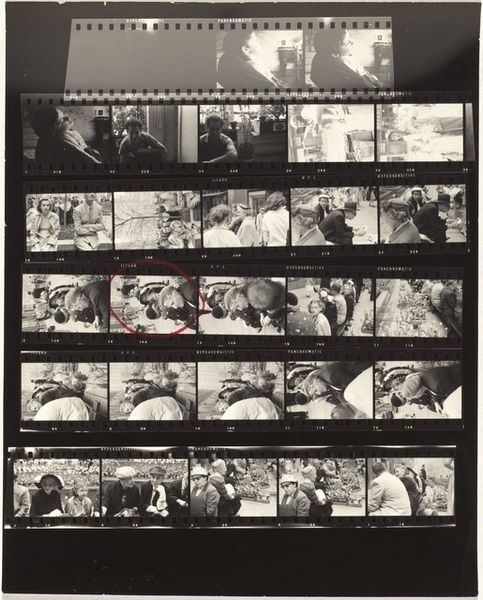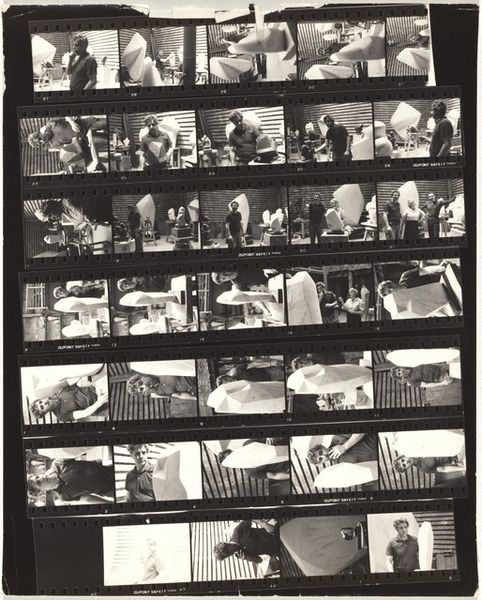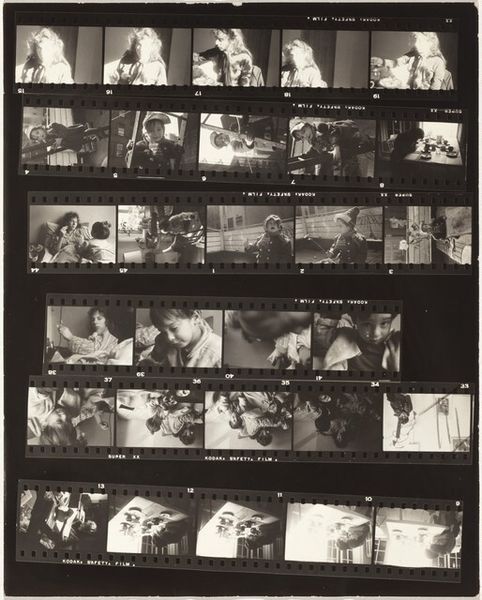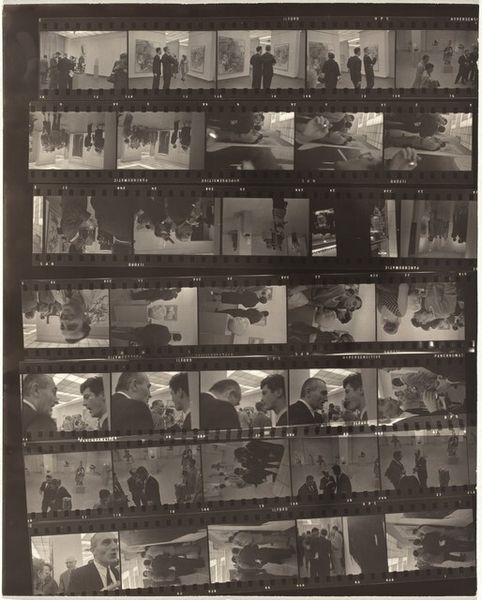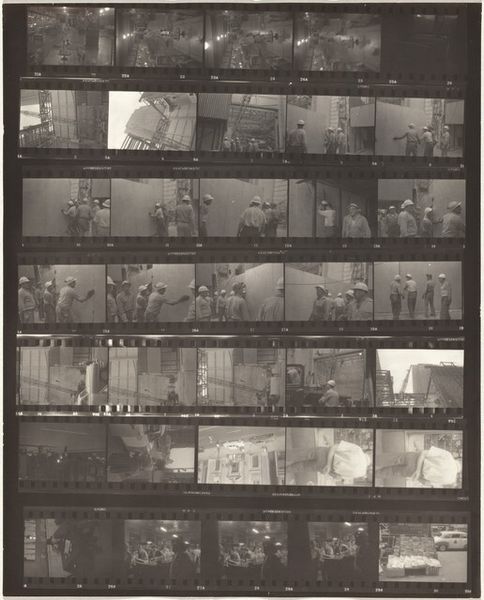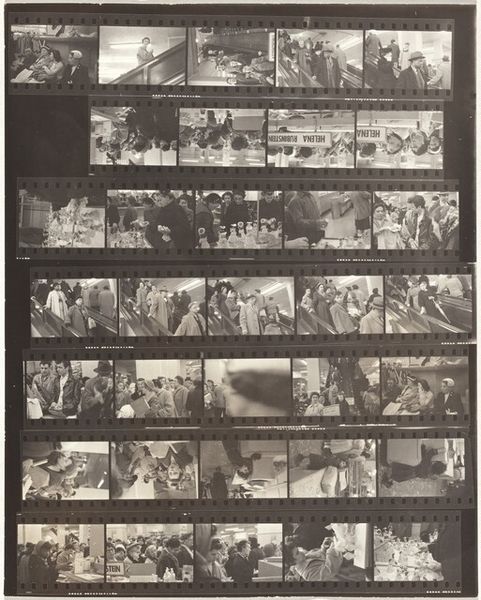
photography, gelatin-silver-print
#
landscape
#
archive photography
#
street-photography
#
photography
#
historical photography
#
gelatin-silver-print
#
monochrome photography
#
modernism
#
monochrome
Dimensions: sheet: 25.2 x 20.2 cm (9 15/16 x 7 15/16 in.)
Copyright: National Gallery of Art: CC0 1.0
Curator: Looking at this gelatin-silver print by Robert Frank, dating to around 1954 or 1955 and titled "Terrace 1," my first thought is just how raw it feels. Like peeking at someone's discarded memories, but on purpose. Does it strike you that way too? Editor: Yes, a discarded reel almost recovered from oblivion. Film isn't a thing in itself so much as it's what allows one reality to connect with another, sometimes subtly and sometimes more dramatically. The symbols aren't immediate, yet this montage somehow speaks to a kind of lost Americana. What visual clues give you that impression? Curator: For me, the repeating scenes of daily life—the children, the street scenes—juxtaposed with darker, seemingly disconnected images. Frank has captured such seemingly banal scenes with this odd sort of solemnity, a tone which echoes post-war melancholy. Editor: The children wearing what look like pointed caps could represent communal ideals or some sort of conformity, their innocence staged as if for a propaganda campaign. They speak of mid-century, cold-war anxieties of children marching together in time like tin soldiers on some larger chessboard. Is Frank consciously exploiting symbols? Curator: I wonder if 'exploiting' is too strong. I think he’s acknowledging and capturing it. Frank always had a way of holding up a mirror to society and making it reflect the good, the bad, and the profoundly weird. He had a wonderful empathy toward the underdog, and a desire for the image to unveil truth through light and shadows. I do think that with the passage of years it offers such insight into its cultural memory and anxieties, almost like seeing his subconscious visualized. Editor: It's the sequence, this roll of exposed negatives with torn edges that I can't shake. In terms of composition, each image, and then all the images, hint to a greater meaning. Its power isn’t just from capturing people or symbols. We can't say exactly where it all happened—these images are like little emotional containers with codes, or triggers—each a window on experience. Curator: Exactly, I love that phrase, ‘emotional containers’. That, I think, captures so much about why I find it fascinating and emotionally haunting, the intimacy he achieved and yet his sense of the emotional complexities inherent to society and culture at that moment in time. Editor: Yes, the image strip is so poignant. Ultimately, it reminds us of all the lost days—a beautiful relic in a broken timeline.
Comments
No comments
Be the first to comment and join the conversation on the ultimate creative platform.
